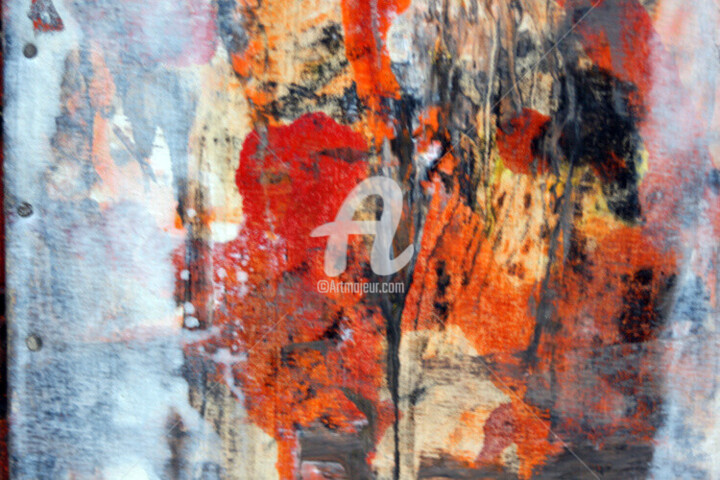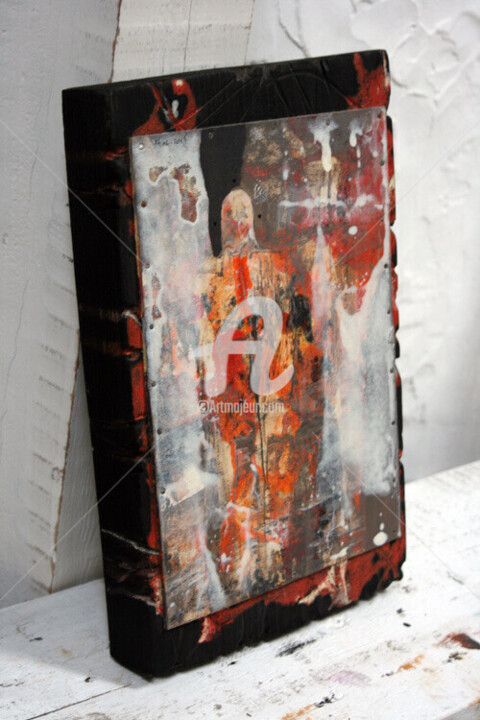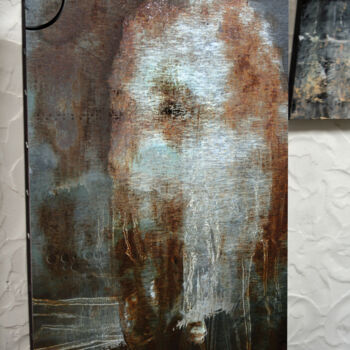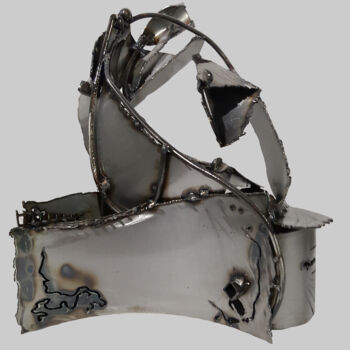



SIGNAL ANGEL FOUND REALITY WEAR ART PAINTING ANGEL KLOSKA (2015) Peinture par Kloska Ovidiu
Achetez une licence pour utiliser cette image pour votre site Web, votre communication ou pour vendre des produits dérivés.
Usage: Licence Web
| 956 px | ||

|
1500 px |
| Dimensions du fichier (px) | 956x1500 |
| Utilisation mondiale | Oui |
| Utilisation sur multi-support | Oui |
| Utilisation sur tout type de média | Oui |
| Droit de revente | Non |
| Nombre maximum d'impressions | 0 (Zero) |
| Produits destinés à la vente | Non |
Téléchargez immédiatement après l'achat
Cette image est disponible pour téléchargement avec une licence: vous pouvez les télécharger à tout moment.
Restrictions
Toutes les images proposées sur ArtMajeur sont des œuvres d'art originales créées par des artistes, tous les droits sont strictement réservés. L'acquisition d'une licence donne le droit d'utiliser ou d'exploiter l'image selon les termes de la licence. Il est possible de faire des modifications mineures comme recadrer, ou recentrer l'image pour qu'elle s'adapte parfaitement à un projet, toutefois, il est interdit d'apporter toute modification qui serait de nature à porter atteinte à l'œuvre originale dans son intégrité (modification des formes, distortions, découpage, changement des couleurs, ajout d'éléments etc...), à moins qu'une autorisation écrite soit obtenue au préalable auprès de l'artiste.
Licences personnalisées
Si votre utilisation n'est pas couverte par nos licences standard, contactez-nous pour une licence personnalisée.
Banque d'images artistiques-
Œuvre d'art originale
Peinture,
Acrylique
- Dimensions Hauteur 14,2in, Largeur 9,1in
- Catégories Peintures à moins de 1 000 $US Abstrait
acrylic painting on cardboard fixed on hard wood, varnished / ready to hang
painting size: 20 x 30 cm
wood size: 23 x 36 cm
1st Century Renaissance Painting of Angels
ANGELS AND HOW ARTISTS PAINT THEM
The world’s most renowned artists, such as Caravaggio, Botticelli, da Vinci, Michelangelo and many artists throughout time have painted some of the greatest masterpieces showing angels. The artwork of the Renaissance is filled with many magnificent pictures of angels. It is from the artwork of this period that most modern images of angels derive. Great artists such as Sandro Botticelli and Leonardo da Vinci portrayed the angels as beautiful men and women in flowing robes, with outspread wings.
This artist is able to paint angels, the warmth of the peace, joy and love shining from them and his art celebrates angels that surround us and watch over us all, and this goodness, truth and beauty is much more powerful than the evil.
I also think it is interesting that this artist paints angels that are consistent with some descriptions in the Bible, but different from all previous artists.
Daniel saw an angel with arms and legs resembling polished metal and precious stones, and a face like lightning (Daniel 10:5-6).
The angel that rolled back the stone from Christ's tomb was radiating dazzling light (Matthew 28:3; Luke 24:4
THIS ART REMINDS US ABOUT ANGELS
Angels bring us peace, love and gentleness. As you well know, the world needs much more of these things. According to Heb 12.22, God created so many angels that it would be impossible to number them.
The Bible tells us that God uses angels to minister to believers in many ways. He sometimes utilizes angels in answering our prayers, involves them into giving us guidance, they sometimes give us encouragement in times of danger and are often involved in guarding us against dangers, they sometimes serve as God's messengers, and angels escort believers into heaven at the moment of death.
The Bible also tells us that angels are often involved in restraining the wickedness of unbelievers. Angels are essentially "ministering spirits," (Hebrews 1:14) and do not have physical bodies like humans.
ANGELS ARE UNIVERSALLY RECOGNIZED IN ALL RELIGIONS
Angel scholar, Geddes McGregor, tells us the English word angel is a transcription of the Greek word "agaylos". In Hebrew, angels are called "mal'ak" meaning messenger. "Mal'ak" originally meant shadow side of God. The Hebrews thought of angels as emanations of Yahweh, part of the same divine spirit. In the Christian church, angels were not believed to be emanations of God, but spirits created by God at the time He created the material world. Muhammad said angels were sent by God to seek out those places where men and women honor the deity. The angels then report back to heaven what they have heard.
Socrates tells us that Eros is a spirit who carries messages back and forth between men and gods. Another angel-like figure from mythology is Hermes, the winged messenger. Nike, or Victory, with her great wings served as a model for later depictions of angels according to art scholar Peter Lamborn Wilson. We also find similar beliefs in supernatural beings in the Shaman.
In the middle ages, St. Augustine described the nature of an angel by relating it to an angel's purpose. The angels are spirits, but it is not because they are spirits that they are angels. They become angels when they are sent. The name angel refers to their office not to their nature. You ask the name of this nature, it is spirit. You ask its office, it is that of angel. In as far as he exists, an angel is a spirit, and as far as he acts he is an angel - St. Augustine.
In the bible, angels have appeared as messengers, guides, and healers. They also make up the celestial court. "And I beheld and I heard the voice of many angels round about the throne, and the number of them was thousands of thousands." - St. John the Evangelist.
Angels are even recorded in the Koran, "You shall see the angels circling around the throne, giving glory to their Lord".
The world's great literature and art tell us about many angel characters - some we're familiar with and some obscure to us now. Yet, the common thread that weaves amongst the legends and the lore is the undeniable influence that angels have had upon nearly every culture and religion known to man. Some people entrust their lives to guardian angels, or believe when they die they will be lead to heaven by the angel of death. There are claimed to be warrior angels who lead us into battle. Some churches and museums are decorated with the images of archangels, seraphim and cherubim. The great religions have tried to define and give them names, while theologians and philosophers have argued their nature and meaning.
Thèmes connexes
Kloska Ovidiu est une artiste roumaine contemporaine. Son langage visuel se rapporte aux rêves, à l'inconscience, au délire, à l'hallucination, au changement de forme et de lumière, au spontané, à l'illusion, au bizarre, à l'anormal et au normal.
Ovidiu travaille avec différents médiums, dont la peinture, la photographie et la sculpture. Ses peintures dramatiques à l'acrylique sur toile rappellent de magnifiques artistes comme John Martin et JMW Turner. Pendant ce temps, ses sculpteurs sur fer sont des œuvres abstraites et industrielles qu'il classe comme appartenant aux approches stylistiques du brutalisme et du déconstructivisme.
Kloska Ovidiu est né en 1977, en Roumanie, où il est diplômé de l'Université des Arts. Membre de l'Union Roumaine des Artistes Professionnels UAP.
-
Nationalité:
ROUMANIE

- Date de naissance : 1977
- Domaines artistiques: Œuvres d’artistes professionnels,
- Groupes: Artiste professionnel Artistes Contemporains Roumains













